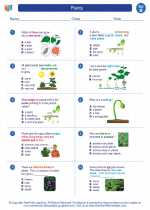Hills
A hill is a raised area of land that is higher than the surrounding area. It is often formed as a result of natural processes such as erosion, tectonic movements, or volcanic activity. Hills can vary in size, shape, and appearance, and they are found all over the world.
Formation of Hills
Hills can be formed through various natural processes, including:
- Erosion: The gradual wearing away of the Earth's surface by the action of water, wind, or ice can create hills over time.
- Tectonic Movements: The shifting of tectonic plates can cause the Earth's crust to fold and uplift, forming hills.
- Volcanic Activity: The accumulation of volcanic materials such as lava, ash, and rocks can result in the formation of volcanic hills.
Characteristics of Hills
Some common characteristics of hills include:
- Sloping Sides: Hills typically have sloping sides that lead to a rounded or peaked summit.
- Vegetation: Many hills are covered with vegetation, including trees, shrubs, and grasses.
- Wildlife: Hills provide habitats for a wide variety of wildlife, including birds, mammals, and insects.
Uses of Hills
Hills have various uses and provide several benefits, including:
- Recreation: Many people enjoy hiking, mountain biking, and sightseeing on hills for recreational purposes.
- Agriculture: Hillsides are often used for farming, particularly for growing crops such as grapes for winemaking.
- Water Catchment: Hills play a crucial role in capturing and storing rainwater, which helps sustain ecosystems and provides a source of freshwater.
Study Guide
Here are some key points to remember about hills:
- Describe the formation of hills and the natural processes involved.
- Identify the characteristics of hills, including their sloping sides, vegetation, and wildlife.
- Explain the uses of hills and their significance to the environment and human activities.
Now that you have a good understanding of hills, you can explore their geological significance, environmental impact, and cultural importance in different regions around the world.
[Hills] Related Worksheets and Study Guides:
.◂Science Worksheets and Study Guides Second Grade. Plants
Study Guide Plants
Plants  Activity Lesson
Activity Lesson All About Plants
All About Plants  Activity Lesson
Activity Lesson All About Plants
All About Plants  Worksheet/Answer key
Worksheet/Answer key Plants
Plants  Worksheet/Answer key
Worksheet/Answer key Plants
Plants  Worksheet/Answer key
Worksheet/Answer key Plants
Plants  Worksheet/Answer key
Worksheet/Answer key All About Plants
All About Plants  Vocabulary/Answer key
Vocabulary/Answer key Plants
Plants  Vocabulary/Answer key
Vocabulary/Answer key Plants
Plants 

 Activity Lesson
Activity Lesson
 Activity Lesson
Activity Lesson
 Worksheet/Answer key
Worksheet/Answer key
 Worksheet/Answer key
Worksheet/Answer key
 Worksheet/Answer key
Worksheet/Answer key
 Worksheet/Answer key
Worksheet/Answer key
 Vocabulary/Answer key
Vocabulary/Answer key
 Vocabulary/Answer key
Vocabulary/Answer key

The resources above cover the following skills:
Concepts of Life Science (SC1, SC2, SC3)
The student demonstrates an understanding of the structure, function, behavior, development, life cycles, and diversity of living organisms by observing and comparing external features of plants and of animals that may help them grow, survive, and reproduce.